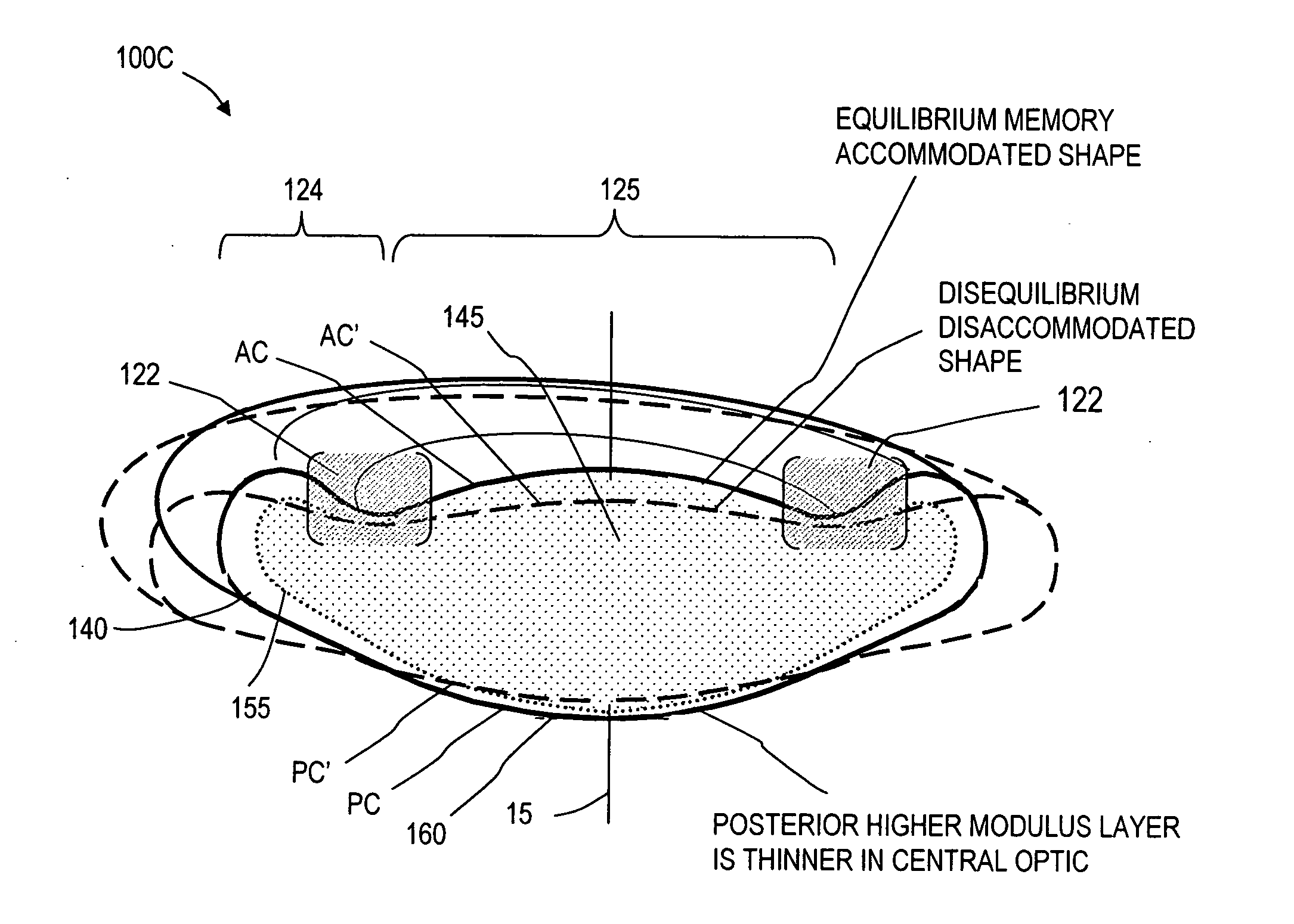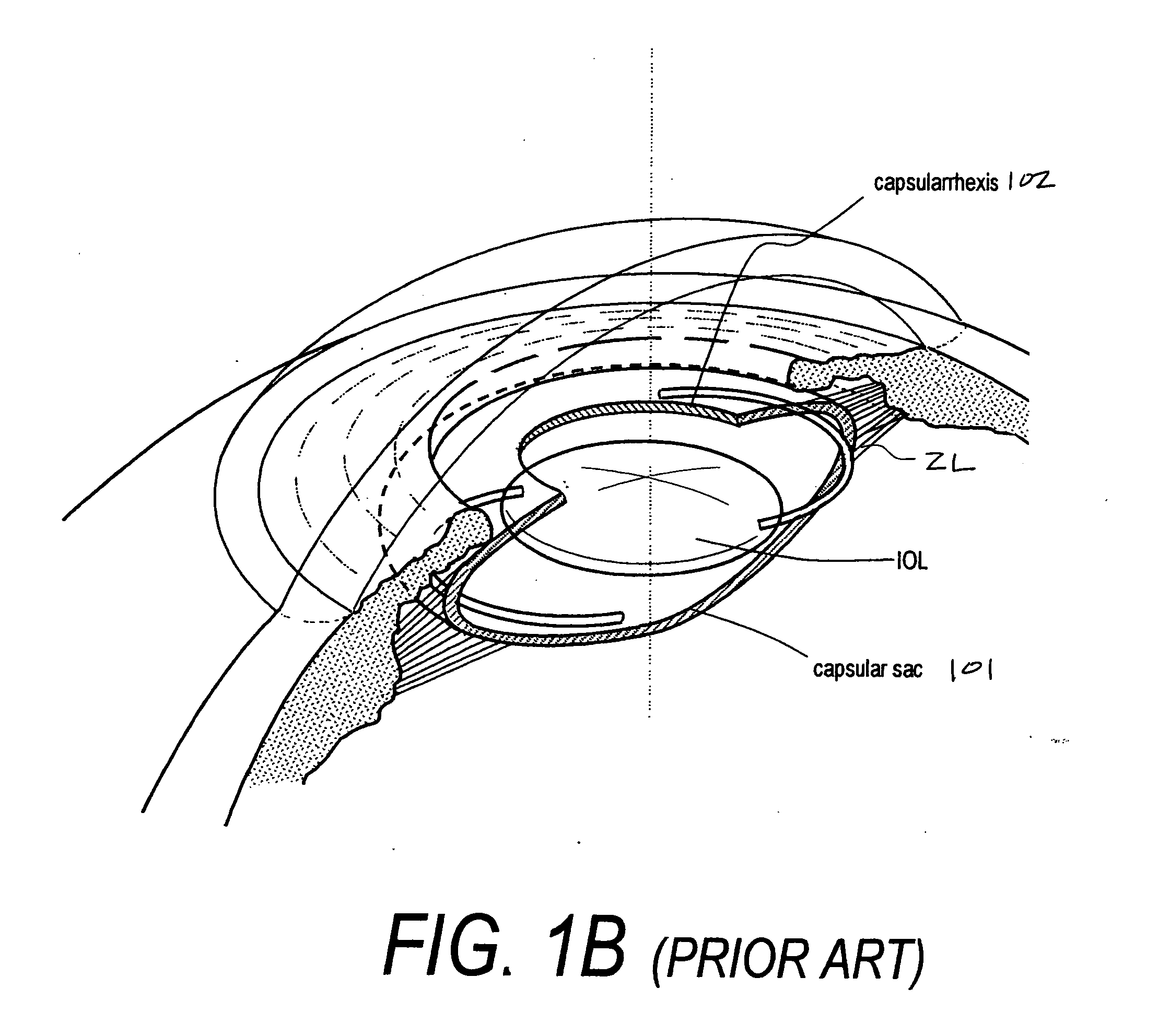Ophthalmic devices, methods of use and methods of fabrication
a technology of ophthalmology and optics, applied in the field of elastomeric optics, can solve the problems of lack of sophisticated materials, no real development of technologies for combining capsular sacs with biocompatible materials to provide biomimetic capsular complexes, etc., to achieve a wide range of ophthalmic devices, improve ophthalmic performance, and optimize force transduction
- Summary
- Abstract
- Description
- Claims
- Application Information
AI Technical Summary
Benefits of technology
Problems solved by technology
Method used
Image
Examples
Embodiment Construction
[0056] The adaptive optic implants corresponding to the invention are designed to create a biomimetic lens capsule complex that cooperates with zonular tensioning and de-tensioning forces. The term biomimetic lens capsule is derived from the word biomimesis, which defines the development of structures that mimic life, or that imitate biological systems. In preferred embodiments, the implant defines 360° elastic engagement with the capular sac and mimics the inherent elastic response of a still accommodative lens capsule. The implant thus cooperates with the ciliary muscles to alter the shape and power of a lens component of the implant.
[0057] The biomimetic lens complex is provided by combining the lens capsule with an elastomeric polymer monolith that engages at least the periphery of the capsule. The exemplary implant embodiments can comprise an isotropic polymeric material, and in preferred embodiments comprises a microfabricated polymer structure or molecular structure that pro...
PUM
 Login to View More
Login to View More Abstract
Description
Claims
Application Information
 Login to View More
Login to View More - R&D
- Intellectual Property
- Life Sciences
- Materials
- Tech Scout
- Unparalleled Data Quality
- Higher Quality Content
- 60% Fewer Hallucinations
Browse by: Latest US Patents, China's latest patents, Technical Efficacy Thesaurus, Application Domain, Technology Topic, Popular Technical Reports.
© 2025 PatSnap. All rights reserved.Legal|Privacy policy|Modern Slavery Act Transparency Statement|Sitemap|About US| Contact US: help@patsnap.com



